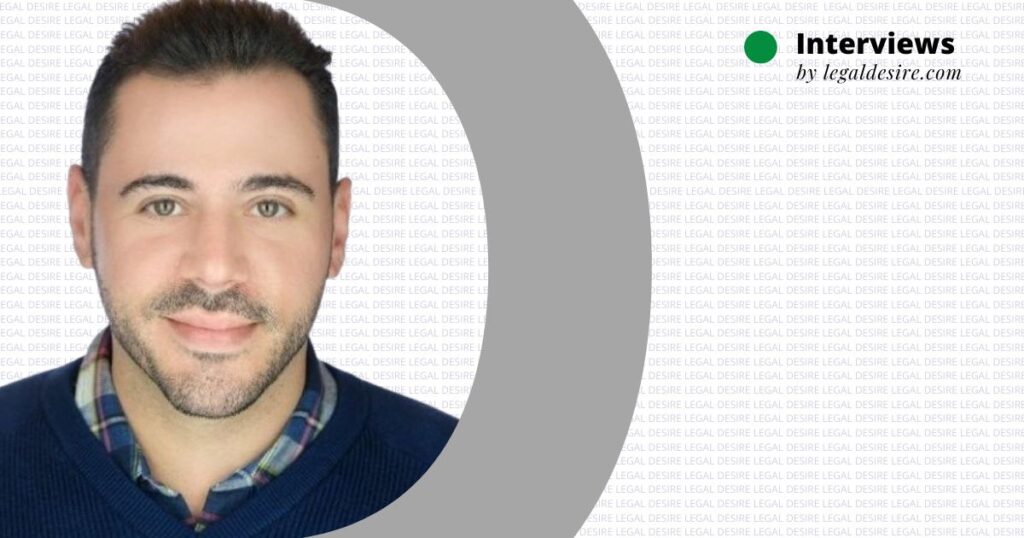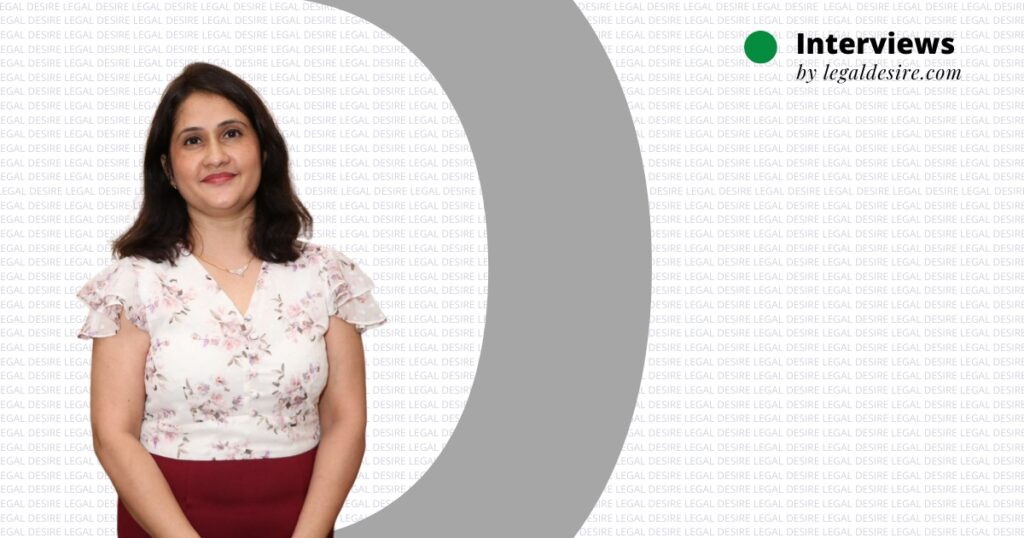Now Reading: In Conversation with Dr. Anna Barbaro, Ph.D., Founder & President of Worldwide Association of Women Forensic Experts (WAWFE)
-
01
In Conversation with Dr. Anna Barbaro, Ph.D., Founder & President of Worldwide Association of Women Forensic Experts (WAWFE)

In Conversation with Dr. Anna Barbaro, Ph.D., Founder & President of Worldwide Association of Women Forensic Experts (WAWFE)
Anna Barbaro, Founder & President of the Worldwide Association of Women Forensic Experts (WAWFE), holds a European Ph.D. in Forensic Genetics, a Diploma of Specialization in Applied Genetics, a Master in Psychological and Behavioral Techniques of the Criminal Investigation. She has diplomas in several post-degree courses in forensic sciences. Chief of the Forensic Genetics Department at Studio Indagini Mediche E Forensi (SIMEF), Italy with over 25 years experience as DNA Expert Consultant at Italian Criminal and Civil Courts. Post-Doctoral researcher at CINQUIFOR – University of Alcalá de Henares (Spain). She is a professor of Forensic Genetics in several post-degree courses, member of several international scientific associations, member of the editorial committee and reviewer for some international scientific journals, author of technical manuals about forensic science, author of more than 150 papers/publications about DNA typing and forensic science, conference and course organizer, invited speaker in courses and conferences, director of Master and Ph.D. thesis.
What inspired your interest in the Forensic domain and when did you decide that Forensic Science is the career for you to pursue?
I grew up in the forensic science field because my father is a pathologist who in the 80s created in the South of Italy a laboratory named Studio Indagini Mediche E Forensi (SIMEF) where there are performed criminalistics analysis. For decades, much famous casework has been investigated at SIMEF.
You have a Master’s degree in Psychological and Behavioural techniques in Criminal investigation and diplomas in several post-degree courses in Forensic Science. But you have a Ph.D. in Forensic Genetics. What inspired your interest in Forensic Genetics?
When I started my degree studies, DNA fingerprinting had been recently introduced by Prof. Alec Jeffrey from the University of Leicester (UK) who utilized this new method to solve a double murder case. I was fascinated by its potential.
In fact, also my degree thesis and the one of the School of Specialization in Applied Genetics were concerning forensic DNA typing.
Over the years I have assisted in the entire evolution of DNA typing from the first techniques to the nowadays fast and very sensitive methods that allow also us to analyze trace samples (i.e. touch DNA).
You are the author of more than 100 papers about Forensic Genetics. In your opinion, what are the most important areas within Forensic Genetics research and development today?
In my opinion, great potential in forensic genetics has the introduction of the Next Generation Sequencing (NGS) method that appears useful because of the rapidity, high sensitivity, high multiplexing capacity (that means the ability to analyze simultaneously different types of genetic markers such as autosomal and sexual STR, SNPs, mt-DNA, ecc) using relatively reduced sample quantity.
In particular, Forensic DNA Phenotyping (FDP) appears really promising. FDP refers to the possibility of obtaining information about the externally visible characteristics of the donor of evidence.
It consists in the analysis of SNPs markers for the prediction of externally visible characteristics (i.e. color eyes, hairs, skin), of biogeography ancestry (that is, the geographical origin of a person’s biological ancestors and a person’s age) with the aim to create a composite sketch useful to identify the donor of a crime scene evidence. This is really relevant when no suspects are available for comparison of DNA profiles using traditional STR markers or no match is found with a national database.
You are the founder and President of the Worldwide Association of Women Forensic Experts (WAWFE). What was your inspiration and what were the challenges that you encountered?
In 2011, I founded WAWFE (www.wawfe.org) when I realized that the Boarding Committees of many forensic associations especially in some countries were mostly made up of men even if the conference participants were generally mostly women. Because of this, the main WAWFE aim is to promote the recognition of women in the international forensic community This is very important, especially in countries where generally women still meet difficulties in the job market and are discriminated against in particular when trying approaching to this specific field.
The other aim is obviously to favor the dissemination of forensic sciences through the organization of events, courses, and conferences, the publication of technical manuals.
I’m proud to see the association has grown up a lot during the last years with the support of many persons (not only women) who collaborate actively in realizing several initiatives. To date, WAWFE has 23 coordinators (women and men) all over the world.
To celebrate forensic women, in 2020 I created the International Forensic Women Day that is held each year on October 16th. My idea achieved immediately the attention and support of the Presidents of other international associations first of all the one of Antoinette Campbell, founder of the Association of Women in Forensic Science, Inc. (AWIFS), that is WAWFE partner. Due to the great number of women involved in forensics, in my opinion, this is a way to recognize their efforts.
You are a member of several international scientific associations and journals, and a reviewer for numerous national and international publications pertaining to Forensic Sciences. What are the general issues that you have encountered during your assessment? What advice would you like to give the young researchers of the Forensic domain who wish to publish their research work in reputed journals?
When I started my career in forensics there were few forensic women, and still, there were prejudices and difficulties, because this field was predominantly male interest.
In addition, some technologies were in development, especially in the field of forensic genetics. During years I never stopped studying, I still continue attending courses on specific topics of my interest, because it’s relevant to keep updated with the last findings in the field. In addition, I continued performing research for developing and validating new methods useful in forensic biology and genetics. Many studies have been presented in conferences or published in scientific journals. I suggest to young researchers to identify the main investigation line according to their own interest and to perform studies related to it, trying to publish results in peer-review journals with a high impact index. Many journals are now available online but not all of them have a good reputation or are indexed. Because of this, it’s really important to check information about the journal quality indicators before submitting a manuscript. In addition, it’s relevant to prepare a good paper, detailing research objectives, methods, and results. Being accurate in this, avoid the reviewers asking for many revisions or rejecting the manuscript.
You have been a DNA Expert Consultant at Italian Criminal and Civil Courts. Describe your experience.
During many years of activity, I dealt with many casework such as homicides, suicides, human remains identification, parentage relationship, paternity tests.
I had many cases famous in Italy, some of them still opened. Furthermore, I had the opportunity to collaborate with UK police analyzing samples related to cold cases.
As an expert of the Prosecutor or of the Criminal court my work consists in analyzing DNA from the evidence (e.g. blood, saliva, hair, etc.) collected at the crime scene and comparing DNA profiles from evidence with that of the victim(s) or of the suspect(s), if available. Sometimes I can go directly to the crime scene to collect the evidence that I will later analyze at the laboratory.
As experts in the Civil Court, I generally analyze biological samples useful for paternity tests or complex parentage relationship reconstructions, generally from living people but sometimes also from deceased people (i.e. bones after an exhumation).
How is being an expert consultant and a researcher different from being an academician?
In my case, the two aspects are strictly connected because I have the opportunity to share my previous experience related to my research and to real casework with students and they are fascinated with this because they can see the practical application of all that they’re studying in theory and also the main problems they have to face. Real experience in my opinion increases the ability to share knowledge.
Many forensic professionals have raised concerns about the discrepancies between the fictional portrayal of Forensic Science and its application in the real world. In your opinion, do these discrepancies exist in relation to Forensic Genetics? If so, in what way? And do we have to be gravely concerned about such discrepancies?
In the last years, television shows, movies, and true crime have produced high expectations for the contribution that scientists and technologies can offer in solving violent crimes.
This so-called “CSI effect” has produced worldwide an excessive interest by students and professionals towards forensic science. In fact, many persons started their careers in the field due to media influence.
But the reality is very different from what appears on TV and real problems and difficulties are great! In fact, due to the hard confrontation with reality, many people who started the forensic activity with great expectations, then they were not able to continue with it.
For example, some forensic science students who came to my laboratory for training, felt bad during autopsies or when viewing a putrefied body, or a lot of blood at the crime scene. Reality is very different from the theory, and also the resistance capacity of each one in front of difficult situations.
What is the most rewarding aspect of the job? What is the best piece of advice for those seeking a career in Forensic Science?
The results of a forensic DNA analysis may contribute to establishing the guilt or innocence of a person, to establish or exclude familiar relationships, because of this, it requires a great scientific competency that may only be achieved by specific education and training, pluriennual experience, application of standardized scientific protocols and obviously stringent professional ethics. Because of this, to become a good forensic expert it’s necessary not only to study at degree and post-degree levels, attending courses on specific topics of interest organized by professionals in the field. Furthermore to be trained it’s relevant to work side by side with real experts because a forensic scientist must have not only theoretical but also practical specific knowledge.
Being an academician and a researcher in the Forensic domain for about two decades, how do you wish to contribute to this domain?
I wish to give my contribution to the forensic field with my research, conference presentations, articles and books. In fact, apart from my publications in scientific journals, I’m also the coordinator and author of a DNA chapter of the Manual of Forensic Science, published in the USA in 2017 by CRC Press that is the result of an international collaboration between WAWFE professionals, coordinator and author of two chapters (DNA and CSI) of another manual of Criminalistics and Criminology, published in Spain in 2020 by Tébar Flores and in 2021 in Colombia by Ecoe Ediciones, author of another manual about The technical Probe in the Penal Trial, published in Italy in 2016 by Key Editore. Actually, I’m the coordinator of a new book about Crime Scene Investigation now in the publication in the USA by CRC Press. Finally, I’m the author of the other 4 chapters in 3 books about DNA Typing (Springer, Elsevier). All these manuals are addressed to professionals and students, in fact, they’re reference books in some courses.
Finally, WAWFE gives a great contribution to the forensic field by organizing webinars, courses, conferences also in collaboration with other groups. This gives the opportunity to students of meeting experts in different forensic fields and to learn from them, but it’s also an occasion for professionals to share knowledge between them.









